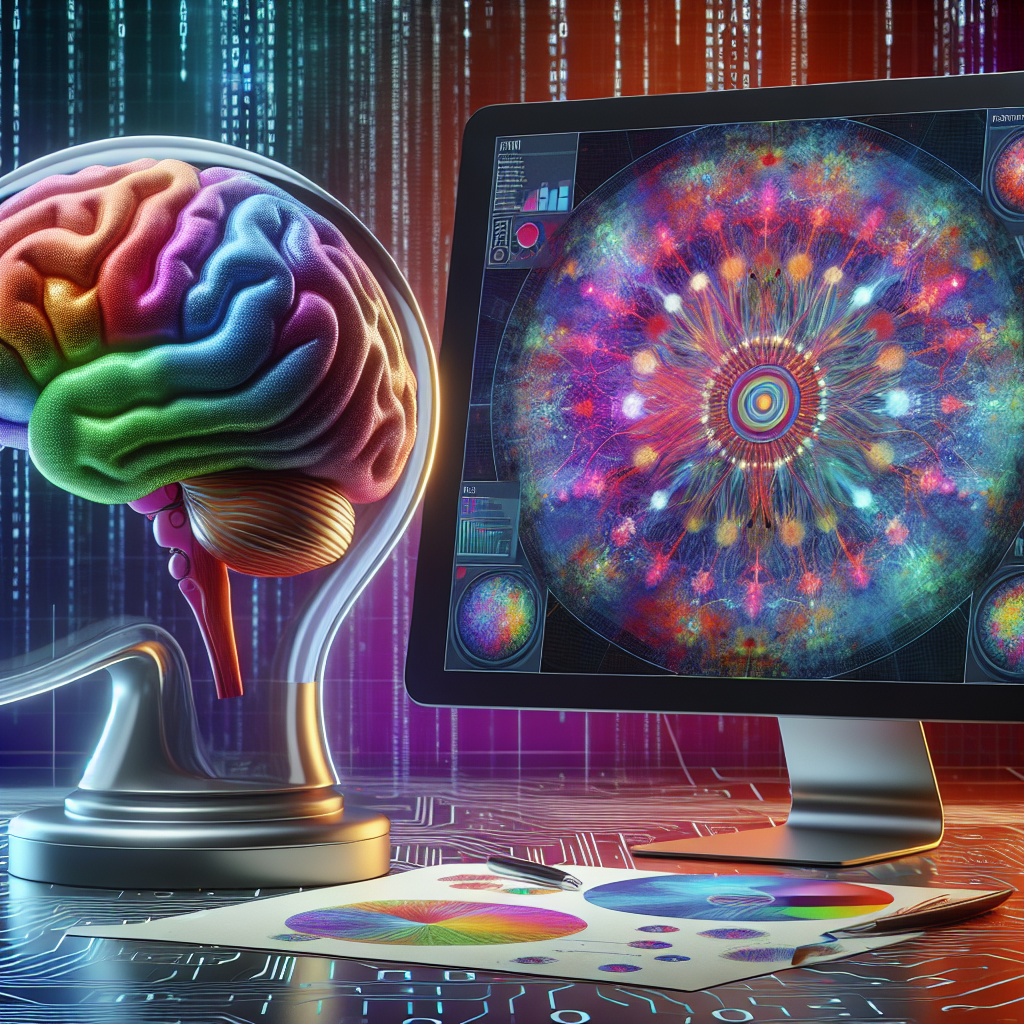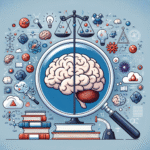
Introduction
Imagine peering into the intricate machinery of the human mind, unearthing the secrets behind thoughts, emotions, and decision-making processes. Functional Magnetic Resonance Imaging (fMRI) offers us this unprecedented glimpse into our internal world. As a powerful tool in neuroscience, fMRI has transcended traditional boundaries, paving the way for breakthroughs in psychology, psychiatry, and cognitive science. In this article, we will delve into fMRI explained: what it reveals about our internal world, examining its mechanisms, applications, and the potential it holds for understanding ourselves better.
Understanding fMRI: The Basics
What is fMRI?
Functional Magnetic Resonance Imaging (fMRI) is a non-invasive imaging technology that measures brain activity by detecting changes in blood flow. When a particular brain region is more active, it consumes more oxygen, leading to an increase in blood flow to that area. fMRI exploits this hemodynamic response, allowing researchers to visualize brain activity in real time.
How fMRI Works
The Science Behind fMRI
Magnetic Resonance Imaging (MRI): The foundation of fMRI lies in traditional MRI technology, which produces detailed images of brain structure.
Blood Oxygen Level Dependent (BOLD) Signal: fMRI primarily relies on the BOLD signal. When neurons in a specific area become active, they increase their metabolic demand for oxygen. This demand results in more oxygenated hemoglobin in the blood, which the fMRI can detect through magnetic resonance technology.
- Data Collection: During an fMRI scan, images are taken every few seconds, creating a series of snapshots of brain activity. These images are then analyzed to interpret which areas of the brain are functioning during various tasks or states of mind.
Applications of fMRI
Neuroscience and Psychology
fMRI has revolutionized the fields of neuroscience and psychology, helping researchers explore complex questions about behavior and cognition. Below are some notable areas where fMRI has made significant contributions:
Cognitive Function: Studies have used fMRI to examine how different brain regions are involved in processes like memory, attention, and language. For instance, research shows that the prefrontal cortex is heavily engaged during decision-making tasks, providing insights into how we weigh options.
- Case Study: A study conducted at MIT used fMRI to study decision-making in economic choices. By visualizing brain activity during choice tasks, researchers were able to identify patterns related to risk assessment.
Emotion Regulation: fMRI has also been essential in understanding the brain’s emotional circuitry. By analyzing how individuals process emotions, clinicians can gain insights into disorders such as depression and anxiety.
- Case Study: Research at Stanford University showed that individuals with major depressive disorder exhibited altered activity in the amygdala and prefrontal cortex when exposed to emotional stimuli, helping clinicians develop targeted therapies.
Social Neuroscience: Understanding how we perceive and relate to others is another exciting application of fMRI. Studies have shown that areas of the brain responsible for empathy and social judgment are active during social interactions.
- Case Study: Researchers at Harvard investigated how brain activity correlates with social judgments of others. Their findings indicated that the medial prefrontal cortex plays a pivotal role in understanding others’ perspectives.
Insights into Mental Health
Anxiety and fMRI
Mental health conditions like anxiety can be challenging to diagnose and treat effectively. fMRI provides a unique lens through which we can understand these conditions.
Identifying Neural Patterns: Research has identified specific neural patterns associated with anxiety disorders. For example, hyperactivity in the amygdala has been linked to heightened responses to perceived threats.
- Tailored Therapies: By using fMRI to track brain responses to treatments, clinicians can develop personalized therapeutic approaches. This has been particularly successful in Cognitive Behavioral Therapy (CBT), where clinicians can adjust treatment based on observed brain activity.
Enhancing Learning and Development
Educational Applications of fMRI
The realm of education has also benefited from insights gained through fMRI research. By understanding how the brain processes information, educators can refine teaching methods to align with our natural learning processes.
Learning Styles: Studies exploring how different individuals engage with new material have revealed that distinct brain activities correspond to various learning styles. fMRI can help identify these differences, guiding individualized education strategies.
- Case Study: An initiative in neuroeducation focused on using fMRI data to adapt classroom environments and curricula, showcasing improved engagement and retention among students.
Challenges and Limitations of fMRI
Things to Consider
While fMRI provides incredible insights into our internal world, it also comes with certain limitations.
Temporal Resolution: While fMRI can capture brain activity changes, the temporal resolution is relatively low compared to other methods like EEG. Changes in blood flow can take several seconds, making it challenging to pinpoint the exact timing of neural events.
Interpretive Complexity: fMRI results can be complicated and require expert interpretation. Misinterpretations can lead to false conclusions about brain activity and its implications.
- Cost and Accessibility: Functional MRI machines are expensive and not widely available in all regions, limiting access for researchers and patients.
The Future of fMRI Research
Innovations on the Horizon
As technology continues to evolve, the future of fMRI research looks promising. Advancements in imaging techniques, machine learning, and data analysis are expected to enhance our understanding of the brain.
Better Imaging Techniques: Innovations such as ultra-high field fMRI and real-time fMRI are likely to improve our ability to capture brain activity with greater precision and speed, paving the way for new discoveries.
- Integration with Other Modalities: Combining fMRI data with other neuroimaging techniques, such as PET scans or EEG, can offer a more comprehensive view of brain activity and connectivity.
Conclusion
In summary, fMRI explained: what it reveals about our internal world is nothing short of revolutionary. This remarkable technology enables us to peek into the brain’s mechanisms, offering insights about cognition, emotion, and behavior. As we continue to explore the potential of fMRI, we are bound to discover even more profound truths about ourselves and how we interact with the world around us.
In these complex and challenging times, the insights gained from fMRI research could lead to breakthroughs in mental health treatment, education, and our understanding of human behavior. Embracing these advancements can empower us to take charge of our mental well-being and enrich our interpersonal relationships.
FAQs
1. What is the difference between fMRI and MRI?
While fMRI and MRI both use magnetic fields to create images of the brain, fMRI specifically measures brain activity through changes in blood flow, whereas MRI focuses on the structure of the brain.
2. How safe is fMRI?
fMRI is considered safe for most individuals. Since it does not involve ionizing radiation, the risks are minimal. However, people with certain implants or devices may need to avoid fMRI scans.
3. Can fMRI be used to diagnose mental illnesses?
While fMRI is a powerful research tool, it is not currently used as a standalone diagnostic tool for mental illnesses. It can, however, provide valuable insights for understanding conditions and tailoring treatment approaches.
4. How expensive is an fMRI scan?
The cost of an fMRI scan can vary widely, often ranging from $400 to $3,500 depending on the facility, location, and purpose of the scan.
5. What are the limitations of fMRI?
Some limitations include lower temporal resolution, the complexity of interpreting results, and limited accessibility due to high costs.
In summary, fMRI is a gateway into understanding our internal workings, and as technology evolves, so too will our understanding of the human mind and behavior. By embracing these innovations, we can unlock the many doors leading to improved mental health, educational strategies, and deeper self-awareness.














